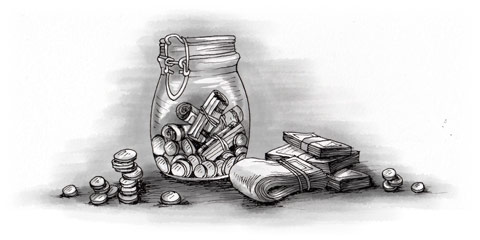Inflation in Italy in 2003 was around 2.4 per cent and the country has enjoyed a relatively stable and strong economy in recent years. Salaries are generally reasonable and Italy has a high standard of living, although the combined burden of social security, income tax and indirect taxes make Italian taxes among the highest in the European Union (EU).
Anyone planning to live in Italy, particularly retirees, should take care not to underestimate the cost of living, which has increased considerably in the last decade. Italy is a relatively expensive country by American standards, and it’s one of the most expensive countries in the EU, although there’s a huge disparity between the cost and standard of living in the prosperous north and central regions of Italy, and the relatively poor south.
Luxury and quality products are expensive, as are cars, but wine and spirits are inexpensive. Food costs almost twice as much in Italy as it does in the US, but is similar overall to most other western European countries, although you may need to modify your diet. However, you should be wary of cost of living comparisons with other countries, which are often wildly inaccurate and usually include irrelevant items which distort the results.
It’s difficult to calculate an average cost of living in Italy, as it depends on your circumstances and lifestyle. It’s possible to live frugally in Italy if you’re willing to forego luxuries and live off the land. Shopping for selected ‘luxury’ items (such as stereo equipment, electrical and electronic goods, computers, and photographic equipment) abroad can also yield significant savings.
A list of the approximate minimum monthly major expenses for an average single person, couple and family with two children is shown in the table below. If you work in Italy, you must also take into account social security contributions and income tax. The numbers in brackets refer to the notes following the table.
| ITEM | MONTHLY COSTS (€) |
||
| Single | Couple | Family Of Four |
|
| Housing (1) | 410 | 650 | 820 |
| Food (2) | 180 | 325 | 410 |
| Utilities (3) | 55 | 80 | 110 |
| Leisure (4) | 110 | 160 | 180 |
| Transport (5) | 110 | 110 | 135 |
| Insurance (6) | 55 | 110 | 120 |
| Clothing | 55 | 110 | 220 |
| Total | 975 | 1,545 | 1,995 |
NOTES
1. Rent or mortgage payments for a modern or modernised apartment or house in an average suburb, excluding major cities and other high-cost areas. The properties envisaged are a studio or one-bedroom apartment for a single person, a two-bedroom property for a couple and a three-bedroom property for a couple with two children.
2. Doesn’t include luxuries or liquid food (alcohol).
3. Includes electricity, gas, water, telephone, pay (satellite) TV and heating costs.
4. Includes all entertainment, restaurant meals, sports and holiday expenses, plus newspapers and magazines.
5. Includes running costs for an average family car, plus third party insurance, annual taxes, petrol, servicing and repairs, but excludes depreciation or credit purchase costs.
6. Includes ‘voluntary’ insurance such as private health insurance, household, third party liability, travel, car breakdown and life insurance.
This article is an extract from Living and Working in Italy from Survival Books.



